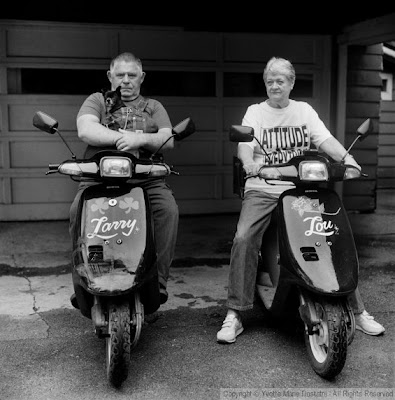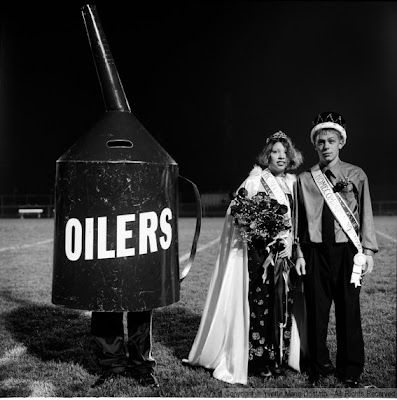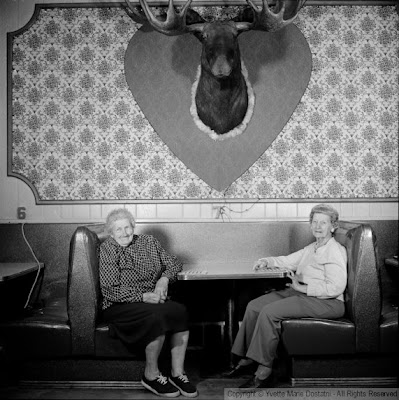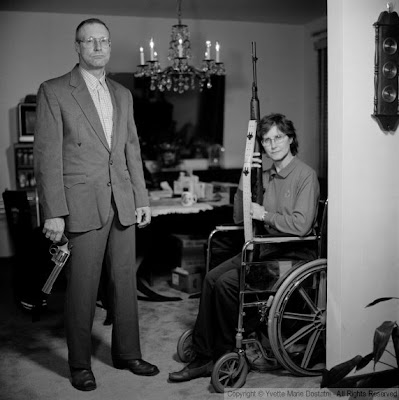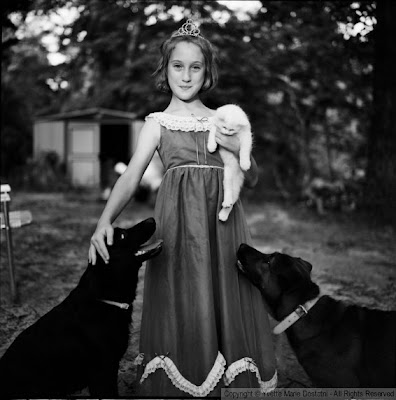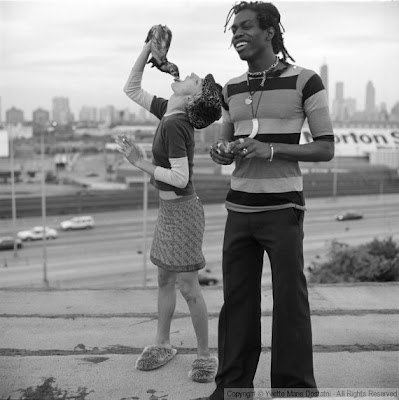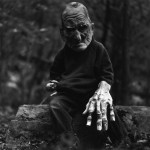Yvette Marie Dostatni
Looking at Review Santa Fe participants from 2010…
Chicago native and photographer, Yvette Marie Dostatni, knows how to take a portrait. Her website showcases many fantastic series that look at communities and cultures that are off the grid, or simply overlooked. A life-long photographer, Yvette is a frequent contributer to the Chicago Tribune Magazine, Chicago Magazine and The Chicago Reader, plus her work has appeared in numerous other publications including National Geographic.
The work featured below is not from the series she brought to RSF, from from two other projects: Portraits and Marzano’s Miami Bowl. Each manage to capture humanity with sensitvity and without judgement –important qualities that allow her to engage with a wide range of subjects.
Images from Marzano’s Miami Bowl
Rick Decanay, manager. “I used to work for a company, and then I was laid off. I bowled here, and Don Marzano, the owner, asked if I wanted a job. I’ve been bowling here since the early ’70s. I’ve been in charge five years. I work 48 hours a week. I run the leagues. And when we needed counter help, I asked my wife, Laura. And when we needed help working the floor, I got my son Joe.” Decanay pauses to bowl a round. He picks up a spare. “There are so many different types of bowlers here. You have your low-average bowlers, you have your high-average bowlers. It makes it nice.”

Maurice Tanter, Chicago Tappers League bowler. “I started bowling in college in 1973 at the University of Illinois in Champaign. A group of our friends were blind, and we started bowling on weekends. I was bowling regularly then. Then when I came back to Chicago, I started bowling regularly here. We listen. We can tell when the pins fall. We may have to ask a sighted person, but if you tell me I have six pins standing, I automatically know it’s on the right side of the lane. Sometimes I can tell by the way I release the ball whether it’s good or bad. You can also tell by the sound of the pins. It sounds like . . . I can’t explain it. . . . Like here,” Tanter points toward the sound of a ball rolling slowly, “you can tell that ball’s going to miss.” The ball rolls into the gutter. “Now you can tell that ball,” he points toward the sound of a ball rolling fast and smooth, it’s gonna hit.” The ball in questions hits the pins and they drop. “Only time I’ve missed bowling is when I had to get a guide dog. I missed about a month, but I haven’t missed since.”

Steven Roberts, Thursday night league bowler. “I’ve been in a bowling alley most of my life. I’m a bowling bum, but it’s kept me out of trouble. My father owned a bowling alley on 66th and King Drive. I was in the bowling alley so much–I worked in the bowling alley, I lived in the bowling alley–I figured I might as well make money in the bowling alley. I started selling shirts in ’85–This and That sportswear. I sell bowling shirts. I sell family reunion shirts. I sell golf shirts. Anything you want. I got a nice price for you. I’ll fix you up. I started bowling in the ’50s. You couldn’t bowl in some alleys then. Now it’s Latinos, blacks and whites mixed together. It’s my second home. Some of my friends call it my first home.”

Jim Okopski, Thursday night league bowler. “Believe it or not I started out at the YMCA on 62nd and Homan. I used to bowl at Ford City Bowl. Gee, I don’t know how long that’s been. They closed down 10 or 15 years ago. My mother used to drop me off, and she would go shopping at Wieboldt’s. At 9:30, she would pick me up, and we would go home together. I just decided to bowl to maybe get out of the house one day a week, and it is good exercise. I love the game, really I do. I like the people. I like the alley. It’s so nice and convenient to my house, which is seven blocks away. When we start up again in August, I’m the first one at the meeting. I don’t bowl in the summer leagues anymore. I had a bad experience walking home in a driving rain storm. I’m debating whether I should–I don’t do anything until the fall league starts.”
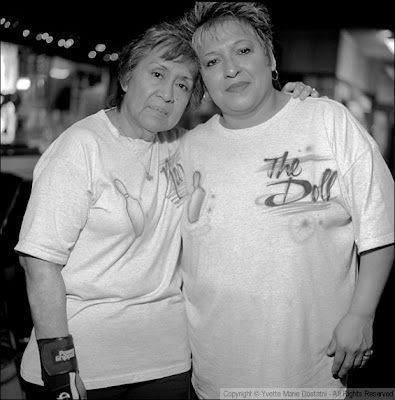
Marge Garcia (left), with Laura “The Doll” Luna, Thursday night league bowlers. “Gosh, I’ve been bowling about 30 or 35 years,” says Garcia. “Myself and my husband bowl. I have two sons. The baby just turned 20, and the older boy is 36. Their wives bowl, and their children bowl on Saturday at Town Hall Bowl. Until I met my husband 14 years ago, I was raising two kids by myself. I decided I wasn’t going to have my kids in gangs or on drugs, so my family grew up in a bowling alley. It kept them off the street. They’ve been bowling since they were babies. My oldest son was six weeks old and my younger son was six weeks old when they started bowling. Soon as they were old enough to hold the ball, they were bowling. Now my son has four children. The 1-year-old, he walks her up to the foul line and helps her roll the ball. She got a strike last week. Bowling’s paid off. I met my husband, Juan, at the bowling alley. We hit it off. Now we bowl together at Miami Bowl on Thursday, and he bowls on Sunday, too. We usually bowl as a family league on Sunday. Bowling’s going from one generation to the next.”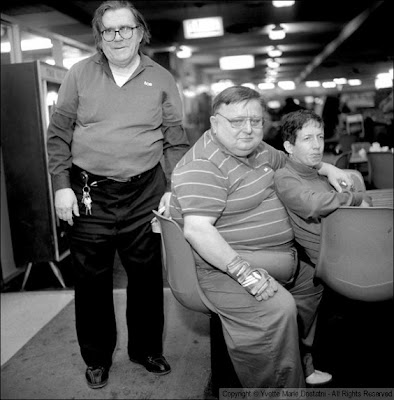
Left to right, Robert Cutter, Phillip Kuhn and Marlene Kuhn, Thursday night league bowlers. “I take the bus to the bowling alley,” says Robert. “It takes me about an hour. I’ve been bowling 36 years. I’ve never missed bowling in 36 years. I’m the first one here and the last one to go home. I even beat the sheet maker (the guy who keeps score for the teams). If I have the flu, I’m still bowling. I still come. I’ve got rehumatisim and I’m still bowling. If I don’t bowl I sit on the couch.” When asked if he’d ever consider quitting bowling, he said, “Hell no! I gotta be dead first!”

Mike Ardolino, security guard. “I started bowling here when I was 8. Then when I needed a job, I worked here as a porter. Then I worked the counter. And when I worked for the Sheriff’s Department, I came back here and started working security. I’ve been working security here 20 years. All them years. All them years! It’s not like working. You come here and see a lot of your friends. This place has been part of me. It’s my whole life.”
Posts on Lenscratch may not be reproduced without the permission of the Lenscratch staff and the photographer.
Recommended
-
Martin Stranka: All My StrangersDecember 14th, 2025
-
The Family Album of Ralph Eugene Meatyard at the High MuseumDecember 10th, 2025
-
Paccarik Orue: El MuquiDecember 9th, 2025
-
Richard Renaldi: Billions ServedDecember 6th, 2025
-
The Art of Documentary Photography: Rania MatarOctober 25th, 2025


